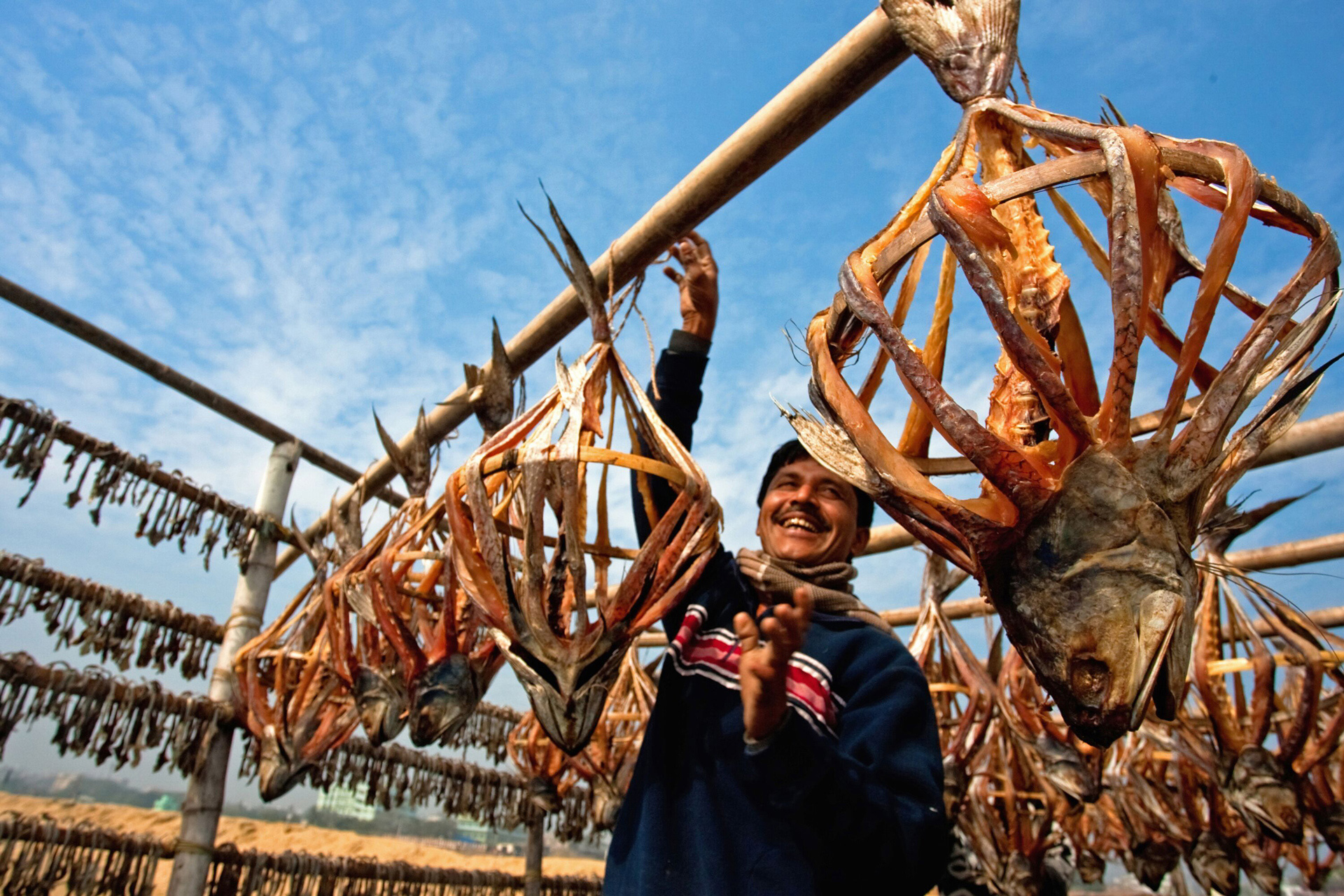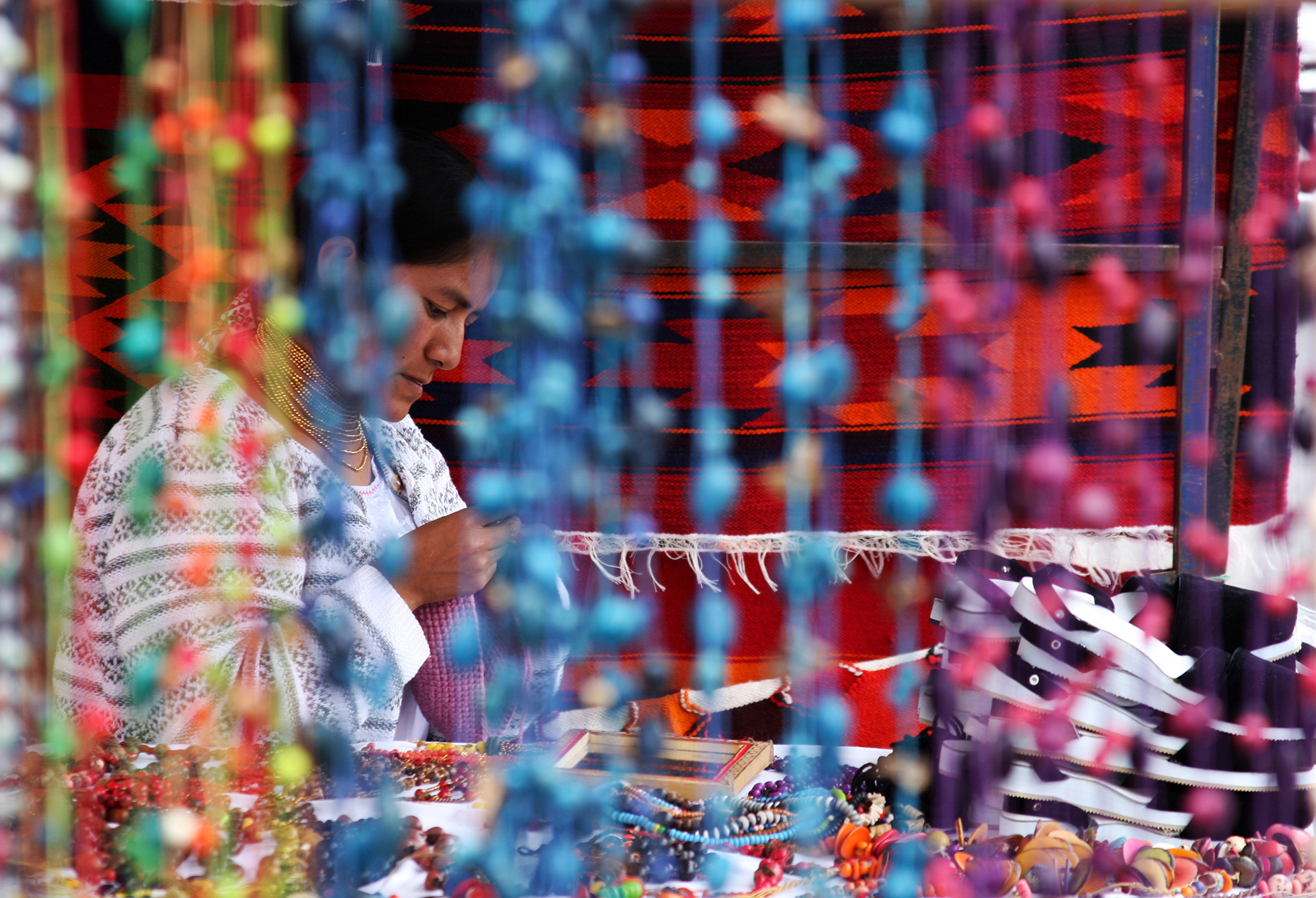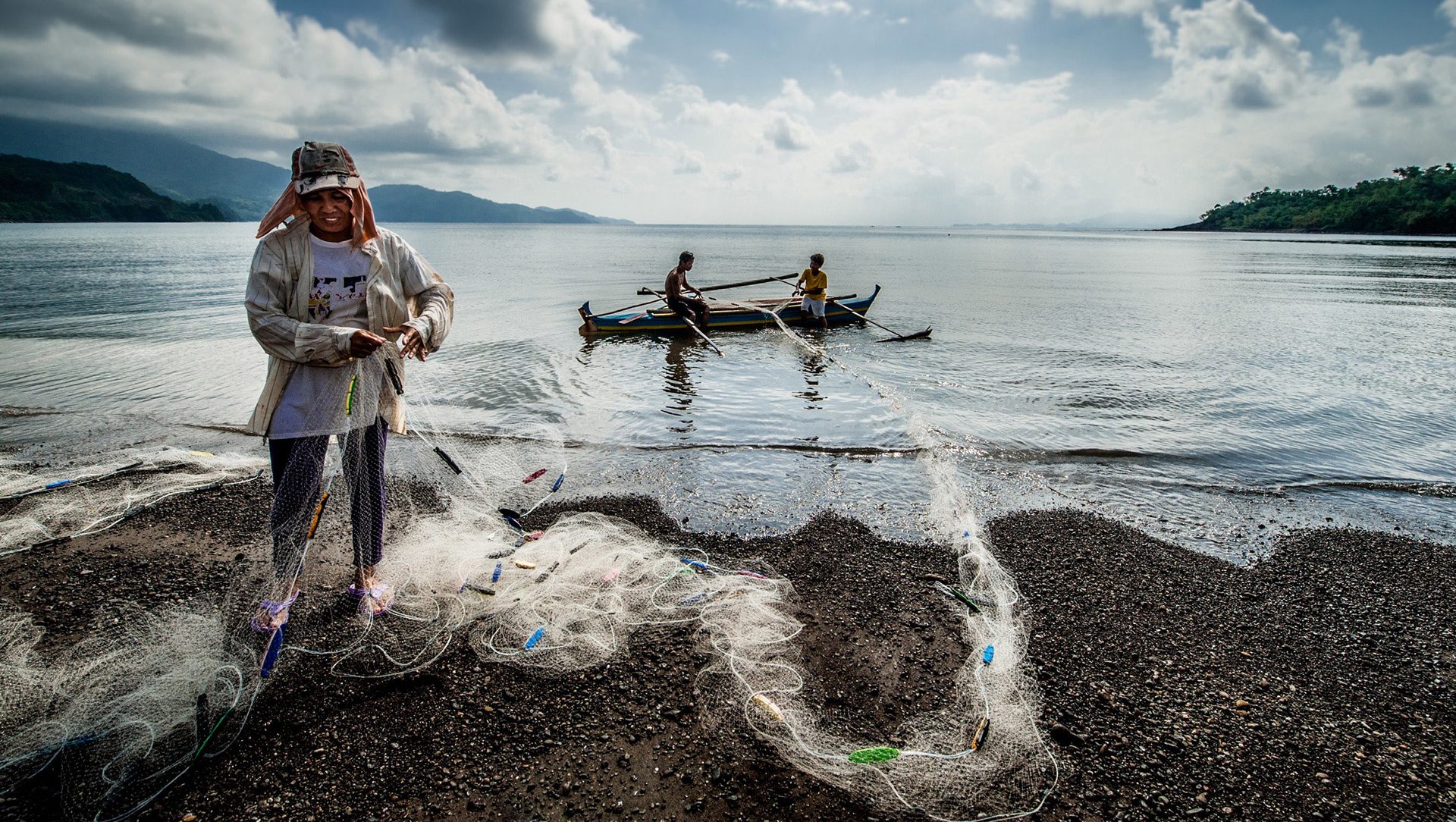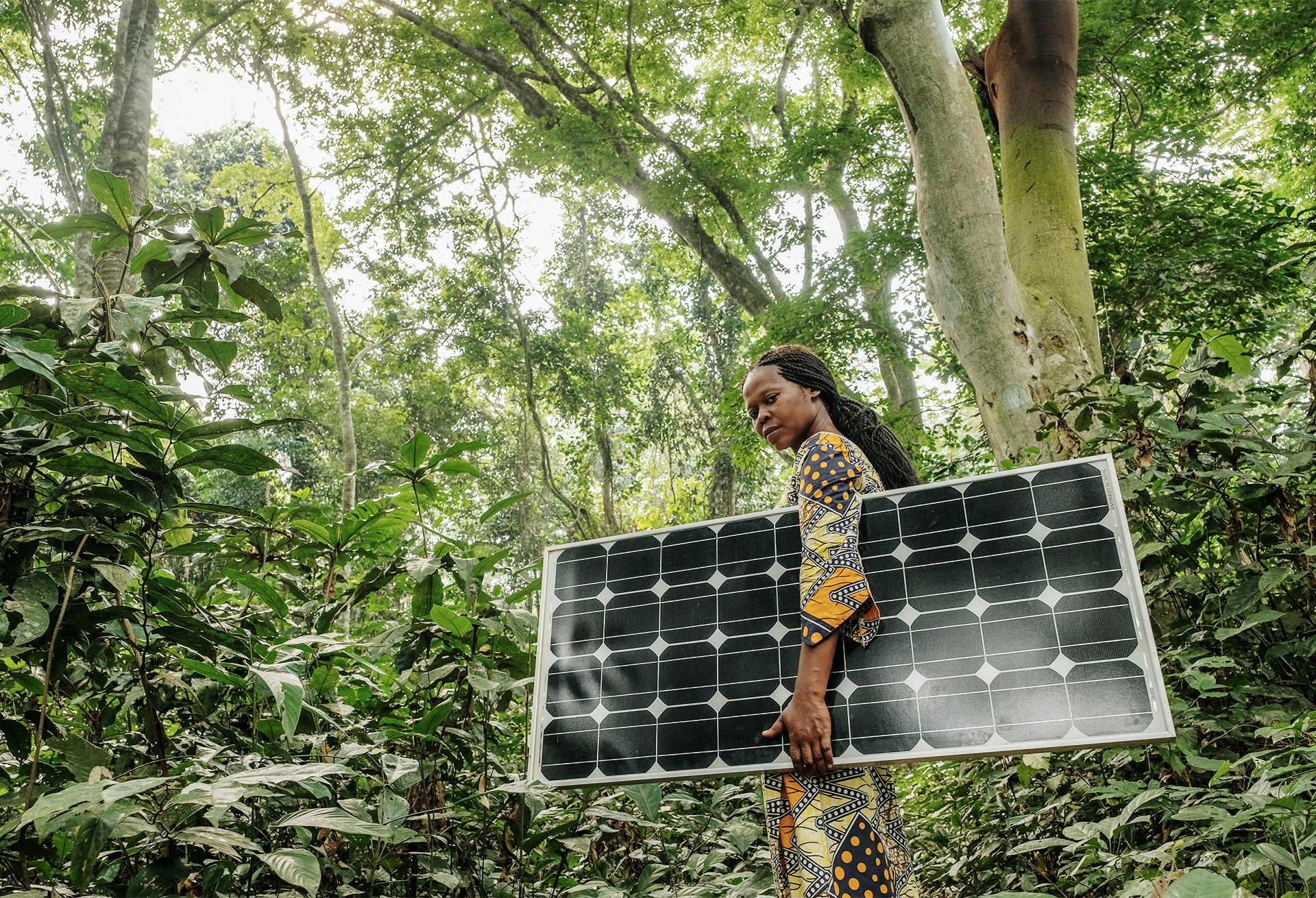UNITED NATIONS SUSTAINABLE
The 17 Sustainable Development Goals (SDGs), adopted by all United Nations member states in 2015, provide a shared agenda to achieve a better and more sustainable future. They address our global challenges, and to ensure that no one is left behind, it is important that we achieve each goal by 2030.
Inclusive finance is an important part of the SDGs, and the financial sector plays a key role in achieving them. Below you will find the SDGs that NpM mainly focuses on, and how inclusive finance can contribute to most of the SDGs.
OUR FOCUS
WE ADDRESS THE FOLLOWING SUSTAINABLE DEVELOPMENT GOALS:
HOW CAN INCLUSIVE FINANCE
CONTRIBUTE TO EACH SDG?
GOAL 1: END POVERTY IN ALL ITS FORMS EVERYWHERE
Sustainable Development Goal 1
Goal 1 of the sustainable development goals aims to end poverty in all its manifestations by 2030 – this includes equal rights to economic resources and access to financial services, including microfinance [1].
How can inclusive finance contribute to SDG 1?
Inclusive finance ensures that also people with low income have access to financial services. Financial services can have a direct and indirect impact on poverty. Savings can help families better absorb financial shocks, smooth consumption, accumulate assets and invest in human capital such as education and health. Microloans to people who are facing economic and social hardship, and to people who want to start their own small business without any real guarantees to support their credit, are considered an important financial instrument to promote SDG 1 [2].
Human capital, such as health and education, is a strong predictor of economic growth, mainly because countries with higher educational attainment can better benefit from technological advances. Investments in human capital can help people climb out of poverty and consequently lead to higher growth [3]. Inclusive finance activities can lead to people spending more money on human capital, mainly because of higher incomes and/or improved awareness of money flows and spending decisions.
____________________
[1] UN. (n.d.). SDG 1. Retrieved from https://sustainabledevelopment.un.org/sdg1.
[2] Conte, D. (2018). ‘Microcredit’ to Serve the Sustainable Development. Retrieved from http://socisdg.com/en/blog/microcredit-to-serve-the-sustainable-development/.
[3] Klapper, L., El-Zoghbi, M., & Hess, J. (2016). Achieving the Sustainable Development Goals. Retrieved from https://www.cgap.org/sites/default/files/researches/documents/Working-Paper-Achieving-Sustainable-Development-Goals-Apr-2016_0.pdf.
GOAL 2: END HUNGER, ACHIEVE FOOD SECURITY AND IMPROVED NUTRITION, AND PROMOTE SUSTAINABLE AGRICULTURE
Sustainable Development Goal 2
After a prolonged decline, world hunger appears to be on the rise again. Conflict, drought and disasters linked to climate change are among the key factors causing this reversal in progress. SDG 2 aims to end hunger by 2030 and ensure access by all people, to safe, nutritious and sufficient food all year round.
How can inclusive finance contribute to SDG 2?
Lack of access to financial services prevents farmers from making investments to increase crop yields and strengthen food security [1]. Farmers need capital to invest in higher quality seeds, irrigation systems, fertilizers and technological advancements that could help them increase yields, produce higher quality output and reduce yield losses (e.g. due to climate change). Financial inclusion provides farmers with resources to produce a vast amount of harvests; thus, reducing hunger and promoting food security.
____________________
[1] Klapper, L., El-Zoghbi, M., & Hess, J. (2016). Achieving the Sustainable Development Goals. Retrieved from https://www.cgap.org/sites/default/files/researches/documents/Working-Paper-Achieving-Sustainable-Development-Goals-Apr-2016_0.pdf
GOAL 3: ENSURE HEALTHY LIVES AND PROMOTE WELL-BEING FOR ALL AT ALL AGES
Sustainable Development Goal 3
With many people still needlessly suffering from preventable diseases and mortality rates increasing in developing countries, SDG 3 aims to ensure healthy lives and promoting well-being for all.
How can inclusive finance contribute to SDG 3?
Financial inclusion gives people access to more resources and the ability to manage medical expenses and rebound from a health crisis. Research suggests that health care payments in developing countries are a main reason why people remain in poverty [1]. In developing countries, inefficient public health care systems, shift the burden of medical costs on the poor. This drains their resources and results in income loss due to inability to work. Savings and insurance products are important tools to mitigate health emergency risks and help manage planned or unplanned medical expenses. In addition, microfinance products (such as mobile money savings) can positively influence spending behaviour which can result in higher income and/or more savings to cover unexpected events [2].
____________________
[1] Klapper, L., El-Zoghbi, M., & Hess, J. (2016). Achieving the Sustainable Development Goals. Retrieved from https://www.cgap.org/sites/default/files/researches/documents/Working-Paper-Achieving-Sustainable-Development-Goals-Apr-2016_0.pdf.
[2] Clovis Rugemintwari, S., & Sauviat, A. (2017). Does Mobile Money Affect Saving Behaviour?. Retrieved from https://nextbillion.net/microfinance-and-health.
GOAL 4: ENSURE INCLUSIVE AND EQUITABLE QUALITY EDUCATION AND PROMOTE LIFELONG LEARNING OPPORTUNITIES FOR ALL
Sustainable Development Goal 4
With over 265 million children out of school despite the importance of education, SDG 4 aims at delivering quality education to improve quality of life and to foster economic development.
How can inclusive finance contribute to SDG 4?
The economic cost of out-of-school children ranges from 1% to 10% of GDP especially in countries experiencing slow growth, while also contributing to rising economic inequality [1]. Financial services, such as savings, help families plan and manage education expenses, while loans, commitment products and direct debit services can help households pay tuition fees. Having access to these services enables families to ensure their children stay in the education system and leads to economic growth.
____________________
[1] Klapper, L., El-Zoghbi, M., & Hess, J. (2016). Achieving the Sustainable Development Goals. Retrieved from https://www.cgap.org/sites/default/files/researches/documents/Working-Paper-Achieving-Sustainable-Development-Goals-Apr-2016_0.pdf.
GOAL 5: ACHIEVE GENDER EQUALITY AND EMPOWER ALL WOMEN AND GIRLS
Sustainable Development Goal 5
Goal 5 of the sustainable development goals aims to achieve gender equality and empowerment of women and girls [1].
How can inclusive finance contribute to SDG 5
Financial services help women build their economic power, which is essential in promoting gender equality. Women are more likely to be self-employed than men in developing countries – the need for financial services for women is therefore of great importance for them to run their own businesses and have their own cash flow. Women usually spend their income on their children, leading to a higher educated and healthier next generation.
____________________
[1] UNDP. (n.d.). Sustainable Development Goals. Retrieved from https://www.undp.org/content/undp/en/home/sustainable-development-goals.html.
GOAL 6: ENSURE AVAILABILITY AND SUSTAINABLE MANAGEMENT OF WATER AND SANITATION FOR ALL
Sustainable Development Goal 6
Over 1 billion people lack access to clean water [1], and 6 out of 10 people globally use sanitation facilities that are not safely managed and may contribute to disease [2]. SDG 6 aims to improve access to both these essential services.
How can inclusive finance contribute to SDG 6?
Inadequate access to clean water and sanitation can cause severe health problems [3]. Lack of access to these services affects other facets of society as well, with girls dropping out of schools after puberty due to a lack of access to proper sanitation [4]. Access to finance in the form of loans can greatly assist in achieving this SDG with over 125 million households requiring loans for this purpose over the next 10 years [5]. Micro-loans can help bring safe, sustainable services within reach for low-income households. Water and sanitation providers can be enabled to serve these low-income households, while also supporting the sustainable expansion of utility networks [6]. To give an example, inclusive finance can contribute to leveraging pay-as-you-go technology to improve access to essential clean water and sanitation services among the poor [7].
____________________
[1] Klapper, L., El-Zoghbi, M., & Hess, J. (2016). Achieving the Sustainable Development Goals. Retrieved from https://www.cgap.org/sites/default/files/researches/documents/Working-Paper-Achieving-Sustainable-Development-Goals-Apr-2016_0.pdf.
[2] World Bank. (2018). 6 clean water and sanitation. Retrieved from http://datatopics.worldbank.org/sdgatlas/SDG-06-clean-water-and-sanitation.html.
[3] Klapper, L., El-Zoghbi, M., & Hess, J. (2016). Achieving the Sustainable Development Goals. Retrieved from https://www.cgap.org/sites/default/files/researches/documents/Working-Paper-Achieving-Sustainable-Development-Goals-Apr-2016_0.pdf.
[4] Klapper, L., El-Zoghbi, M., & Hess, J. (2016). Achieving the Sustainable Development Goals. Retrieved from https://www.cgap.org/sites/default/files/researches/documents/Working-Paper-Achieving-Sustainable-Development-Goals-Apr-2016_0.pdf.
[5] Mehta, M. (2008). Assessing Microfinance for Water and Sanitation. Retrieved from https://docs.gatesfoundation.org/Documents/assessing-microfinance-wsh-2008.pdf.
[6] Pathak, H., & M, Gyawali. (2010). Role of Microfinance in Employment Generation: A Case Study of Microfinance Program of Paschimanchal Grameen Bikash Bank. Retrieved from https://www.nepjol.info/index.php/JNBS/article/view/6401/5208.
[7] Klapper, L., El-Zoghbi, M., & Hess, J. (2016). Achieving the Sustainable Development Goals. Retrieved from https://www.cgap.org/sites/default/files/researches/documents/Working-Paper-Achieving-Sustainable-Development-Goals-Apr-2016_0.pdf.
GOAL 7: ENSURE ACCESS TO AFFORDABLE, RELIABLE, SUSTAINABLE AND MODERN ENERGY FOR ALL
Sustainable Development Goal 7
SDG 7 is on access to essential and affordable clean energy. With more than 1.3 billion people lacking access to electricity, achieving this SDG will have significant impact on people’s lives [1].
How can inclusive finance contribute to SDG 7?
The prohibitive costs of extending infrastructure to informal settlements and rural communities deters much needed investment in energy. Digital financial services, such as digital payments for e.g. pay-as-you-go systems, can lower transaction costs and enable a range of payments that would otherwise be expensive to make. They allow people in poor communities to make payments from home, while also making it easier for infrastructure companies to collect small payments. Digital financial services, used in finance models for off-grid electricity can also reduce the cost and size of loans for financing payments for infrastructure, particularly off-grid energy.
____________________
[1] Klapper, L., El-Zoghbi, M., & Hess, J. (2016). Achieving the Sustainable Development Goals. Retrieved from https://www.cgap.org/sites/default/files/researches/documents/Working-Paper-Achieving-Sustainable-Development-Goals-Apr-2016_0.pdf.
GOAL 8: PROMOTE SUSTAINED, INCLUSIVE AND SUSTAINABLE ECONOMIC GROWTH, FULL AND PRODUCTIVE EMPLOYMENT AND DECENT WORK FOR ALL
Sustainable Development Goal 8
With roughly half the world’s population still living on the equivalent of about 2 USD a day [1], despite global unemployment rates being 5.7% [2], having a job doesn’t guarantee the ability to escape from poverty in many places. This SDG is essential to promote better wage and in-turn living conditions.
How can inclusive finance contribute to SDG 8?
Exclusion from the formal financial system weakens shared economic growth leading to increased income inequality. Access to finance allows people to gain higher returns on capital. This can mobilize finance to create productive economic ventures and improve profitability of successful innovations [3]. Increasing evidence from research shows that, rural branch expansion, generally increased financial services among all levels of society, and digital financial services contribute to a rise in incomes [4]. Microfinance products, particularly microcredit products, contribute to increasing small businesses that in-turn contributes to boosting local economy and creating jobs [5].
____________________
[1] UN. (n.d.). Promote inclusive and sustainable economic growth, employment and decent work for all. Retrieved from https://www.un.org/sustainabledevelopment/economic-growth/.
[2] UN. (n.d.). Promote inclusive and sustainable economic growth, employment and decent work for all. Retrieved from https://www.un.org/sustainabledevelopment/economic-growth/.
[3] Klapper, L., El-Zoghbi, M., & Hess, J. (2016). Achieving the Sustainable Development Goals. Retrieved from https://www.cgap.org/sites/default/files/researches/documents/Working-Paper-Achieving-Sustainable-Development-Goals-Apr-2016_0.pdf.
[4] Klapper, L., El-Zoghbi, M., & Hess, J. (2016). Achieving the Sustainable Development Goals. Retrieved from https://www.cgap.org/sites/default/files/researches/documents/Working-Paper-Achieving-Sustainable-Development-Goals-Apr-2016_0.pdf.
[5] Pathak, H., & Gyawali, M. (2010). Role of Microfinance in Employment Generation: A Case Study of Microfinance Program of Paschimanchal Grameen Bikash Bank. Retrieved from https://www.nepjol.info/index.php/JNBS/article/view/6401/5208.
GOAL 9: BUILD RESILIENT INFRASTRUCTURE, PROMOTE INCLUSIVE AND SUSTAINABLE INDUSTRIALIZATION, AND FOSTER INNOVATION
Sustainable Development Goal 9
SDG 9 aims for greater investment in resilient infrastructure, promotion of inclusive and sustainable industrialization and foster innovation [1].
How can inclusive finance contribute to SDG 9?
Easy access to credit and financial services that facilitate investments contributes to the promotion of innovation and sustainable development of industries within a country or region. Access to financial services allows for more start-ups and allows existing firms to increase investment inventory, labor and other means of production. This allows these firms to continue growing within their own respective markets. Credit contributes to business start-ups growth and a robust expansion of start-ups [2].
____________________
[1] UN. (n.d.). SDG 9. Retrieved from https://sustainabledevelopment.un.org/sdg9.
[2] Klapper, L., El-Zoghbi, M., & Hess, J. (2016). Achieving the Sustainable Development Goals. Retrieved from https://www.cgap.org/sites/default/files/researches/documents/Working-Paper-Achieving-Sustainable-Development-Goals-Apr-2016_0.pdf.
GOAL 10: REDUCE INCOME INEQUALITY WITHIN AND AMONG COUNTRIES
Sustainable Development Goal 10
SDG 10 calls for reduced income inequalities based on age, sex, disability, race, ethnicity, origin, religion or economic or on any other status within a country.
How can inclusive finance contribute to SDG 10?
People with access to financial services are better positioned to succeed economically and built a decent life, thus reducing income inequalities [1]. Inequalities within societies lead to economic unrest, which can lead to disengagement and conflict. Access to financial services can lead to more equal opportunities and increased engagement in local markets.
____________________
[1] Klapper, L., El-Zoghbi, M., & Hess, J. (2016). Achieving the Sustainable Development Goals. Retrieved from https://www.cgap.org/sites/default/files/researches/documents/Working-Paper-Achieving-Sustainable-Development-Goals-Apr-2016_0.pdf.
GOAL 11: MAKE CITIES AND HUMAN SETTLEMENTS INCLUSIVE, SAFE, RESILIENT, AND SUSTAINABLE
Sustainable Development Goal 11
SDG 11 entails that 70% of the world population will live in cities by 2030, thus making cities critical in achieving a sustainable future for the world.
How can inclusive finance contribute to SDG 11?
Access to financial services allows people to invest in adequate housing considering the poor often live in poor conditions [1]. This can allow people to live in economically sustainable areas, which increases their chances to more economic opportunities.
____________________
[1] UNSGSA. (2018). Igniting SDG Progress Through Digital Financial Inclusion. Retrieved from https://www.unsgsa.org/files/1615/3738/5820/SDG_Compendium_Digital_Financial_Inclusion_September_2018.pdf?utm_source=2018+December+Newsletter&utm_campaign=102f2afc2a-EMAIL_CAMPAIGN_2018_12_11_03_45&utm_medium=email&utm_term=0_d72fad0239-102f2afc2a-575763645.
GOAL 13: TAKE URGENT ACTION TO COMBAT CLIMATE CHANGE AND ITS IMPACTS
Sustainable Development Goal 13
Goal 13 of the sustainable development goals entails to take urgent actions to combat climate change and its impacts.
How can inclusive finance contribute to SDG 13?
Loans are provided for working capitals or investment in fixed assets. Products, such as insurance, provide support to greater resilience to shocks. Institutions in developing countries can built systems that allow for rapid and effective responses to natural disasters [1]. Furthermore, inclusive finance can allow people to access, afford and use cleaner technology, which reduces greenhouse gas emissions and ultimately contribute on combating climate change [2].
____________________
[1] E-MFP. (2019). European Microfinance Award 2019 Focuses on How Financial Inclusion Sector Can Strengthen Resilience to Climate Change. Retrieved from http://www.e-mfp.eu/blog/european-microfinance-award-2019-focuses-how-financial-inclusion-sector-can-strengthen.
[2] IPA. (n.d.). Climate Change and Financial Inclusion. Retrieved from https://www.poverty-action.org/sites/default/files/publications/Climate-Change-Financial-Inclusion_Final.pdf.
GOAL 16: PROMOTE PEACEFUL AND INCLUSIVE SOCIETIES FOR SUSTAINABLE DEVELOPMENT, PROVIDE ACCESS TO JUSTICE FOR ALL AND BUILD EFFECTIVE, ACCOUNTABLE AND INCLUSIVE INSTITUTIONS AT ALL LEVELS
Sustainable development goal 16
With multiple parts of the world affected by internal instability, threats of international homicide, violence against children, human tracking and sexual violence are important to address to promote peaceful and inclusive societies for sustainable development.
How can inclusive finance contribute to SDG 16?
Studies have pointed out that democracy is more likely to be consolidated in places where inequality is low while political instability is more likely in countries where inequality is high [1]. Financial inclusion improves the lives of the poor, reducing inequality while decreasing the likelihood of social turmoil. Financial services also help people get assistance when crises do arise, by allowing people to make transfers to people affected, and enabling people to receive assistance from both family members (despite the distance) and international aid organizations.
____________________
[1] Klapper, L., El-Zoghbi, M., & Hess, J. (2016). Achieving the Sustainable Development Goals. Retrieved from https://www.cgap.org/sites/default/files/researches/documents/Working-Paper-Achieving-Sustainable-Development-Goals-Apr-2016_0.pdf.






